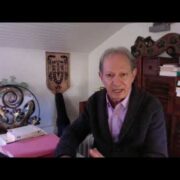Do you expect the people around you to hurt you? In this article, we’ll talk about the fact that expecting that you’re going to be hurt, humiliated, manipulated, made fun of, or taken advantage of in some way can be hurtful. Indeed, if you feel that you’re a target of constant abuse by others, you pay a high emotional cost.
In the early 2000s, Jeffrey Young developed schema therapy (ST). It’s an intervention aimed at clients who have problems defining what they feel and what’s happening to them due to the fact that they feel blocked. For Young, a characteristic of these people is the way in which they cope with their problems. It’s based on avoidance.
Schemas
Schemas are learned, internalized, and unconscious patterns of processing information from the environment. More specifically, they’re packages of sequences of emotions, thoughts, memories, ways of relating to the participatory universe, and coping.
Schemas can produce either pain and suffering or just noise. The goal of therapy is to achieve a cure for a painful schema, or at least to make them produce only noise, instead of discomfort.
Schemas that produce pain are called early maladaptive schemas (EMS). For instance, have you ever felt like you self-sabotage yourself? This is how they work.
The mistrust and abuse schema
For Young, there are 18 different types of EMS. Today we’re going to focus on just one. It’s the mistrust and abuse schema. It implies disconnection and rejection.
As humans, we have basic and universal needs that we must satisfy. If this doesn’t happen, schemas like the one we’re talking about here emerge. Among the psychological needs you must comply with are:
- The need to know that you belong to a group and can bond in an intimate, safe, and stable way. In addition, to know that your relationships are based on mutual bonds of love and affection. It implies the certainty of knowing that you’re accepted by those you love.
- The ability to spontaneously express what you’re thinking and the emotions you feel. Moreover, the ability to do this freely and without fear.
- The certainty that you’re an autonomous being. In other words, despite having and enjoying ties with others, your identity is yours alone. It implies the knowledge that you’re an individual and that you feel competent.
Are your close ties secure ties? Do you feel protection and warmth from your intimate relationships? Are you free to say and ask for whatever you want without fear? Are you independent or codependent? These are some of the questions you should ask yourself to discover if you’re incorporating the mistrust and abuse schema into your life.
Working with the mistrust and abuse schema
Psychotherapeutic practice from a schema therapy perspective is complex. We’re going to give you some general guidelines concerning this process and its techniques for change.
Change at the cognitive level
In the field of psychology, cognition is understood as the way in which you process information that comes from your environment. It refers to the way you reason about the events that happen to you, the memories you have in this regard, and how you solve any problems.
Those who’ve been victims of abuse develop a particular sensitivity. They’re more adept at detecting environmental threats, no matter how small. In effect, they’re hypersensitive.
The objective of schema therapy is to help them reduce their excessive monitoring of the environment.
The objective is to offer alternative points of view on others’ intentions.
Emotional change
The memories victims have of their abusive situations are distressing for them. In fact, they’re sometimes so painful that, when they remember them, they feel extremely angry. Especially when they think of their abusers.
The objective of schema therapy is to promote the expression of their hidden anger and allow it to surface. To this end, it uses narrative strategies. For example, letter writing.

Change at the behavioral level
Going slowly is the key. That’s because trusting others again is far from easy. It needs to be done gradually and, above all, safely.
Therefore, schema therapists work from behaviors that imply intimacy. The client needs to be able to share their memories and secrets with someone with whom they feel comfortable. They must also set boundaries regarding the aspects that hurt them.
How about you, do you know how to defend yourself? Because knowing how to defend yourself is important if you feel like you’re a target of abuse. It’s also helpful to make use of assertive communication. In addition, setting boundaries is useful. That said, you must accept the fact that there’ll be times when these are repeatedly and deliberately crossed. Consequently, you must consider whether it’s worth continuing in these kinds of relationships.
Finally, if you feel like you’re a target of constant abuse and you don’t know what to do about it, remember that a psychologist or psychiatrist will be able to help you.
The post The Mistrust and Abuse Schema: Feeling Like a Target of Abuse appeared first on Exploring your mind.



















Comments